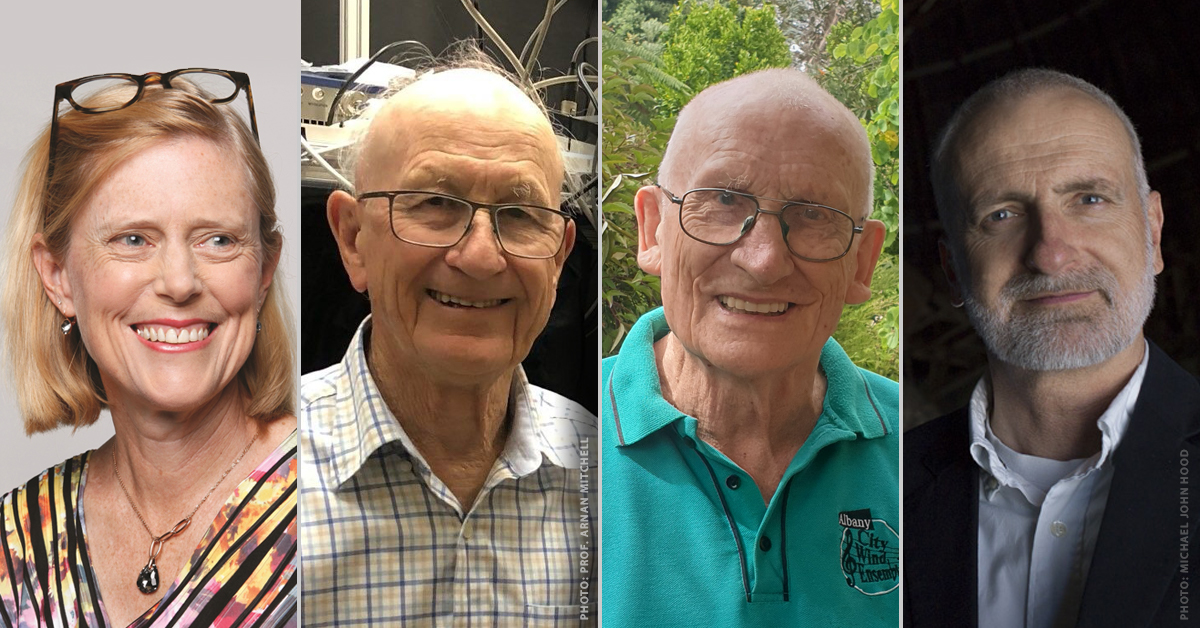
Fellows of the Australian Academy of Science continue to exemplify excellence in science, with four Fellows among those recognised in the 2023 Order of Australia honours.
This year, two Fellows—Professor Melissa Little and Emeritus Professor Peter Hannaford—have received Companion of the Order of Australia (AC) Awards, the highest appointment to the Order of Australia, recognising “eminent achievement and merit of the highest degree in service to Australia or to humanity at large”.
Professor Matthew Colless has received the prestigious Officer of the Order of Australia (AO) medal, while Emeritus Professor John Pate’s achievements have seen him recognised as a Member of the Order of Australia (AM).
Professor Little is internationally recognised for her research on kidney development and her pioneering studies into renal regeneration.
Her work has been featured on the front covers of Nature and Nature Cell Biology, describing the generation of kidney organoids from human pluripotent stem cells—a breakthrough that opened the door to kidney disease modelling, drug screening and the bioengineering of replacement kidney tissue.
Together with a strong track record of commercial translation, she has been a leader in Australian science policy through her membership of both the Wills and McKeon reviews of health and medical research.
Professor Little has been awarded an AC “for eminent service to medical research through pioneering contributions to regenerative therapies for kidney disease, and to stem cell medicine”. She was elected an Academy Fellow in 2017.
Elected to the Academy in 1991, Emeritus Professor Hannaford is a prominent physicist and Distinguished Professor at Swinburne University of Technology.
Professor Hannaford was also Chair of the National Committee for Spectroscopy from 1993 to 2003.
His contributions to atomic spectroscopy include: the analysis and interpretation of the profiles of atomic resonance lines emitted by hollow-cathode atomic spectral lamps; the development of methods of generating atomic vapours by cathodic sputtering; and the realisation that such vapours would greatly facilitate many fundamental investigations by high-resolution and time-resolved laser spectroscopy.
These contributions constituted the creation of an increasingly important new field of laser spectroscopy with sputtered atoms.
Professor Hannaford receives his AC “for eminent service to science, particularly to experimental physics, as an academic and researcher, to professional institutions, and as a role model for young scientists”.
Professor Colless has led high-impact research in the fields of observational cosmology, galaxy and cluster evolution and the large-scale structure of the Universe, and has driven the development of multi-object spectroscopy in the new field of statistical astronomy. In particular, his conception of and leadership of the 2dFGRS survey has firmly established the values of many key cosmological parameters. These include the determination of the Hubble constant, the cosmological constant, the matter density in the Universe, the baryonic to dark matter fraction, and an upper limit on the neutrino fraction.
Professor Colless is Director of the Research School of Astronomy and Astrophysics at the Australian National University and was previously Director of the Australian Astronomical Observatory.
He has been awarded the AO “for distinguished service to scientific research, particularly to astronomy and astrophysics, and to professional societies”.
Professor Colless was elected an Academy Fellow in 2004.
Pre-eminent in the field of plant biology and physiology, Emeritus Professor Pate’s major contribution has been the quantitation and integration of our understanding of the carbon and nitrogen economy of legume plants, especially the pea. Using a wide range of experimental approaches and techniques, many of his own devising, he has analysed the circulatory system for nitrogen and carbon compounds, particularly in the fruits, but also in the leaves, roots and nitrogen-fixing nodules.
His work has elucidated the interrelations and traffic between xylem and phloem, and the nature of the competition between roots and nodules in their metabolic activities. With Professor B.E.S. Gunning, he discovered transfer cells and elucidated their function in plants.
Elected an Academy Fellow in 1980, Professor Pate has been recognised as a Member of the Order of Australia “for significant service to botany, and to tertiary education”.
Professor Pate was also elected to the Royal Society of London in 1985 and inducted to the Western Australian Science Hall of Fame in 2017.
© 2025 Australian Academy of Science